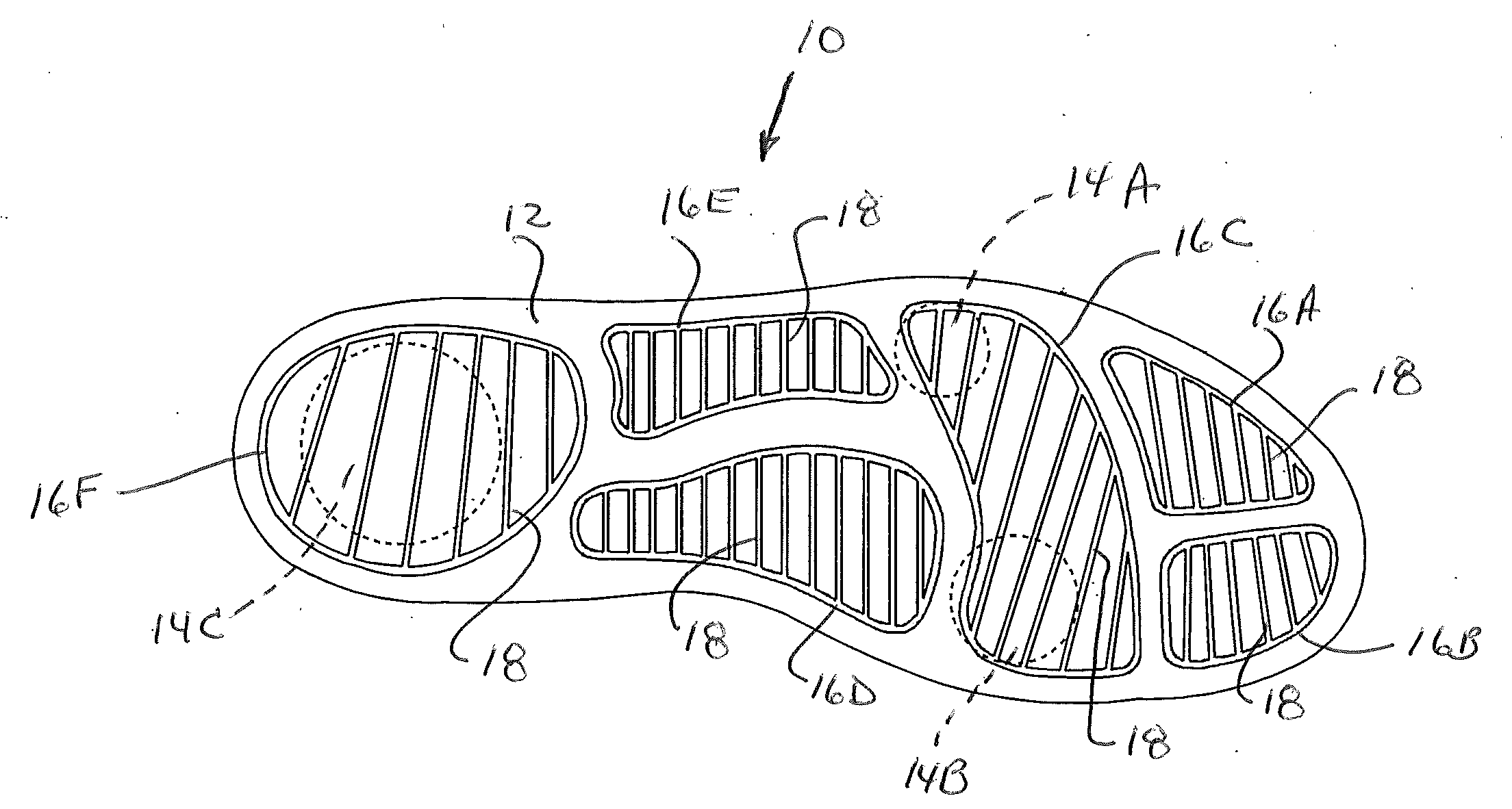Outsole with pods and grooves
a technology of outsoles and grooves, applied in the field of outsoles, can solve the problems of limiting the runner's ability to move efficiently, lack of cushioning, and many problems of barefoot shoe designs, and achieve the effect of distributing foot pressure and facilitating sole flexibility
- Summary
- Abstract
- Description
- Claims
- Application Information
AI Technical Summary
Benefits of technology
Problems solved by technology
Method used
Image
Examples
Embodiment Construction
[0015]Footwear generally includes an upper and a sole assembly that is affixed to the upper or to other components of a shoe. It is envisioned that the upper may embody any number of characteristics typical of casual or dress footwear, providing individuals the opportunity of having the benefits of the barefoot experience in “everyday” and “office appropriate” footwear. The sole assembly further includes an outsole, typically having a peripheral shape designed to conform to the shape of a wearer's foot. For ease of reference herein, the human foot may be generally considered to have three regions: the forefoot region (area adjacent the toes), the midfoot region (area adjacent the medial arch between the forefoot and the hind foot regions) and the hind foot region (area adjacent the heel). When referring to such locations and the way in which the regions of the foot are received within a shoe, these terms should be interpreted to include those areas that are disposed generally (and n...
PUM
 Login to View More
Login to View More Abstract
Description
Claims
Application Information
 Login to View More
Login to View More - R&D
- Intellectual Property
- Life Sciences
- Materials
- Tech Scout
- Unparalleled Data Quality
- Higher Quality Content
- 60% Fewer Hallucinations
Browse by: Latest US Patents, China's latest patents, Technical Efficacy Thesaurus, Application Domain, Technology Topic, Popular Technical Reports.
© 2025 PatSnap. All rights reserved.Legal|Privacy policy|Modern Slavery Act Transparency Statement|Sitemap|About US| Contact US: help@patsnap.com


